Health Management
Trinity believes that maintaining and improving the health of our employees, who support our company, is an important management issue. By promoting health management, we hope that each one of our employees will be able to perform at their best, leading to sustainable growth for the company and its employees.

Trinity Industrial Corporation Health Declaration
Our company’s most important asset is our employees.
We believe that employees and their families leading healthy and fulfilling lives, physically and mentally, is the driving force to create “quality products” and “quality work.” This driving force will create “customer satisfaction and excitement” and lead to our contribution to society.
Trinity Industrial Corporation hereby declares that we will commit ourselves to creating a company and a workforce that are cheerful, happy, energetic, and full of vitality.
September 1, 2019
Toshiaki Tamaki, President
Trinity Industrial Corporation
Promotion System
Trinity promotes health management with the president as the chief supervisor and a director assigned to oversee the initiatives.
Specific activities involving the company are carried out by a working group consisting of the Safety and Health Promotion Department and the Corporate Planning Department.


Employee health
- Rate of low-risk persons
Rate of low-risk persons who are engaged in 4 or more good lifestyle habits across the entire healthcare system
Set based on FY2019 health checkup results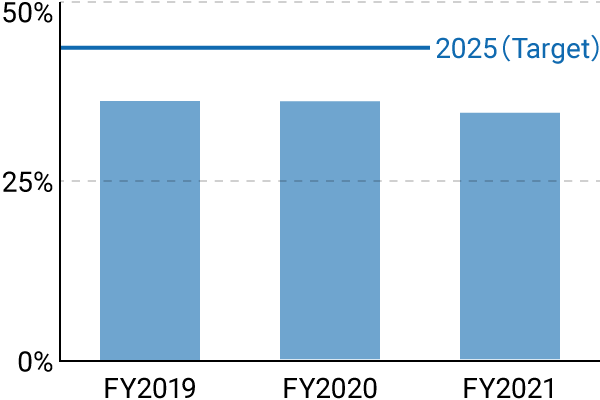
-
Definition of low-risk persons
Age 39 or younger: All items are scored "a"40 years old and over: All items are scored "a" or "b"
a(Normal) b(Moderate caution) c(Caution) d(Dangerous) Obesity BMI ~24.9 25~29.9 30~ Blood pressure Maximum blood pressure ~129 130~139 140~159 160~ Minimum blood pressure ~84 85~89 90~99 100~ Blood lipids Neutral lipids ~149 150~299 300~499 500~ HDL cholesterol 40~ 35~39 ~34 LDL cholesterol ~119 120~139 140~179 180~ Glucose metabolism Fasting blood glucose ~99 100~109 110~125 126~ HbA1c ~5.5 5.6~5.9 6.0~6.4 6.5
- Health condition
Percentage of those within the normal rangeFY2021

-
Percentage of findings by age group (findings: b, c, d scores for each item)

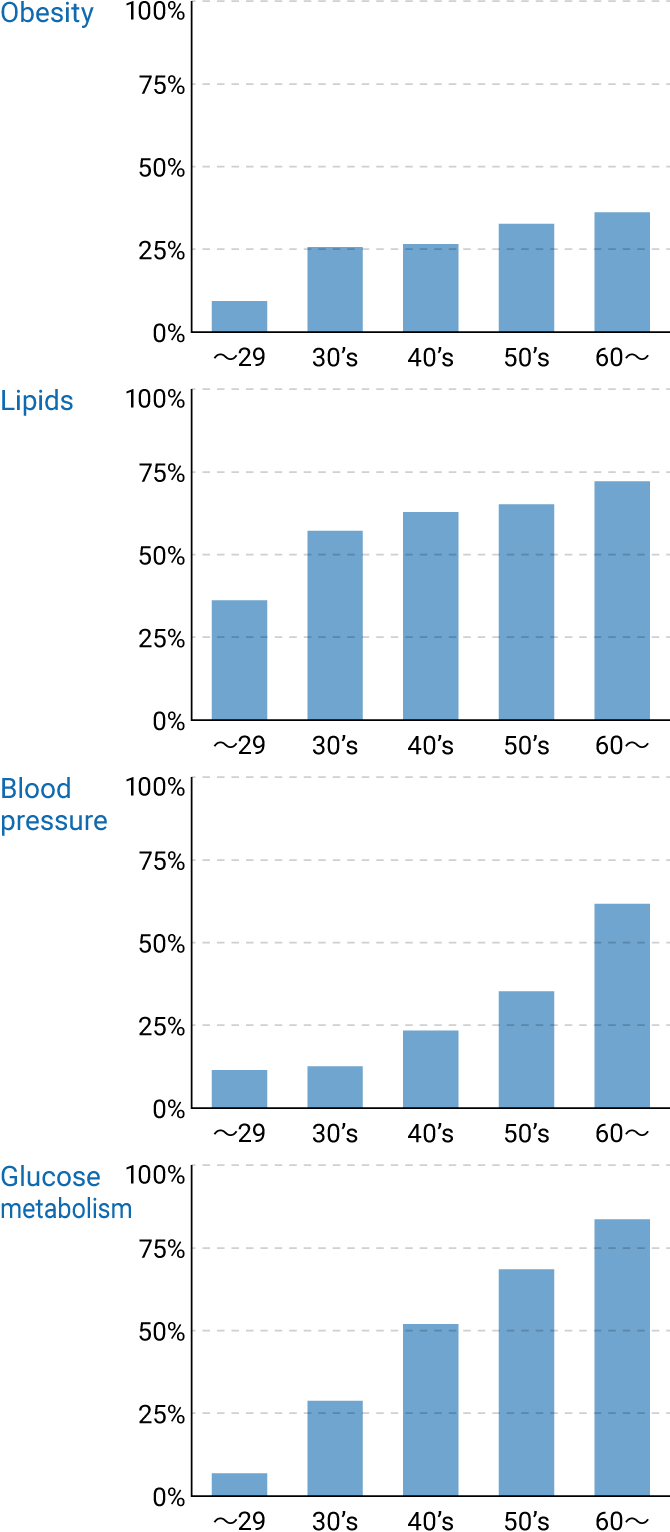
- Good lifestyle habits
FY2021

-
Definition of good lifestyle habits
Smoking:Do not smoke.
Exercise:Two or more of the following apply.
(1) Exercise that makes you sweat lightly for at least 30 minutes at least twice a week.
(2) Walking or similar physical activity for at least 1 hour a day
(3) Walk faster than persons of the same sex of similar ageDiet:Three or more of the following apply.
(1) Do not eat too fast
(2) Eat dinner within 2 hours before bedtime less than 3 times a week
(3) Do not consume snacks or sugary drinks in addition to three regular meals
(4) Skip breakfast less than 3 times a weekAlcohol consumption:Drink less than 2 units per day daily, less than 3 units per day occasionally, or do not drink
Sleep:Get enough rest with sleep
Main initiatives
Improving eating habits:
The company offers the following initiatives to improve lipid and sugar metabolism and optimize calorie intake.
- Company cafeteria
-
- Smart meals and half-size portions offered
- Calories displayed on all menus
- Display of total calories at checkout


Smart Meals 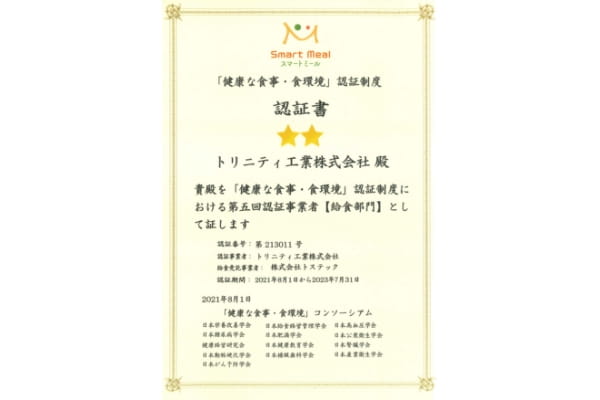
Smart Meal Certificate 
Display of total calories at checkout
- On-site vending machines
-
- Calorie display
- Introduction of vegetable juice, nutritional supplements, etc.
Initiatives to promote regular exercise habits
The following initiatives are implemented to maintain and promote good health.
- (1) Morning radio calisthenics
- (2) Lunchtime stretching sessions
- (3) In-house walking events using a pedometer application (twice a year)
- (4) Participation in health promotion campaigns sponsored by health insurance unions (every year from September to November)
"Health Challenge" initiative to improve exercise habits, diet, and dental care - (5) Educational activities using in-house portal site, etc. (Introduction of exercise menus that can be performed in the office or at home, etc.)



Weekly targets for each item are shown in the table below.
Exercise 5 points or more (a specific number of points is set for each exercise)
Diet Check your own diet type and set a goal that fits your type
Teeth (1) Brush teeth carefully before bedtime (about 5 minutes) … 5 or more days a week
(2) Use dental floss or interdental brush … At least once a week
Minimum of 4 weeks of weekly goals achieved to qualify as participation; a minimum of 9 weeks to be eligible as an achievement.
| FY2019 | FY2020 | FY2021 | Target values | ||
|---|---|---|---|---|---|
| Exercise | Participation rate | 97.3% | 98.2% | 99.0% | 100% |
| Achievement rate | 92.0% | 96.0% | 96.4% | 100% | |
| Diet | Participation rate | 98.5% | 99.0% | 99.6% | 100% |
| Achievement rate | 95.8% | 97.5% | 99.0% | 100% | |
| Dental care | Participation rate | 95.8% | 96.5% | 97.2% | 100% |
| Achievement rate | 85.1% | 93.6% | 95.4% | 100% | |
Anti-smoking measures
We believe that anti-smoking measures are an essential health issue not only from the standpoint of the health of the employees themselves but also from the standpoint of preventing passive smoking. We have banned smoking indoors at all of our business locations.
In addition, to support employees trying to quit smoking, we provide full subsidies for outpatient smoking cessation visits. The first Monday of each month is designated as "No Smoking Day," when smoking is prohibited on the entire premises, including the outdoor smoking areas.
| FY2019 | FY2020 | FY2021 | Target values | |
|---|---|---|---|---|
| Smoking Rate | 34.2% | 32.2% | 31.2% | 25%以下 |
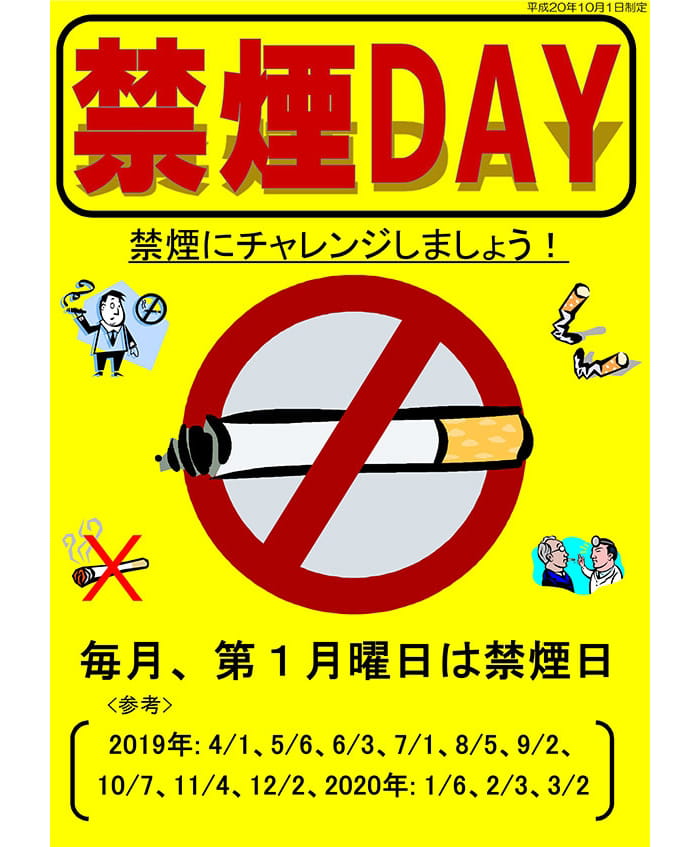

Health Checkups
All employees, including those stationed overseas, receive regular health checkups. We are also working to increase the rate of health checkups by subsidizing the cost of health checkups for family members (35 years of age or older) of the health insurance association. As a follow-up to periodic health checkups, we also provide subsidies for re-examination fees and offer specific health guidance to raise employees' health awareness.
| FY2019 | FY2020 | FY2021 | Target values | ||
|---|---|---|---|---|---|
| Health checkup rate | Employee | 100% | 100% | 100% | 100% |
| Family | 53.4% | 43.6% | 52.3% | 58%以上 | |
| Rate of re-examination | 100% | 100% | 100% | 100% | |
| Rate of specific health guidance | 100% | 100% | 100% | 100% | |
Initiatives for cancer prevention
We have incorporated gastric and colorectal cancer screening into regular health checkups for early disease detection.
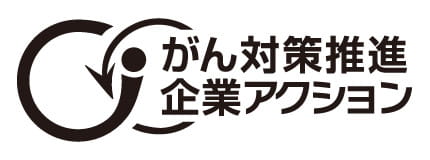
Initiatives for female-specific diseases
Breast and cervical cancer examinations are offered to those who wish to receive them. Seminars are also held to provide knowledge on.
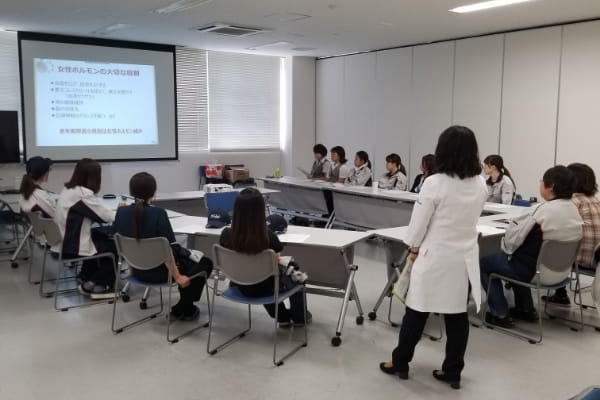
Initiatives for mental health
The following initiatives are being implemented for mental health.
- Preventive measures:
-
- Self-care education (at the time of hiring and in the third year)
- Line-care education (at the time of promotion to senior managers and managers)
- Stress checks
- Support for employees with health issues:
-
- Consultation services by public health nurses are available.
- Support for employees returning to work:
-
- Regular meetings with industrial physicians and public health nurses
FY2019 FY2020 FY2021 Target value Stress check implementation rate 99.1% 99.9% 100.0% 100%
Measures against infectious diseases
As a measure against Covid-19, we adopted new lifestyles and encouraged telecommuting and staggered work hours.
We are also working to reduce the risk of infection by improving the workplace environment, including permanently installing disinfection equipment and installing partitions in the office and cafeteria.
In addition, as a countermeasure against influenza, we offer in-house vaccinations and subsidize the cost of vaccinations for the families of employees (1-15 years old) who are members of the health insurance association.
| FY2019 | FY2020 | FY2021 | Target values | |
|---|---|---|---|---|
| Influenza prevention rate: Vaccination rate | 61.4% | 82.2% | 45.6% | 80%以上 |

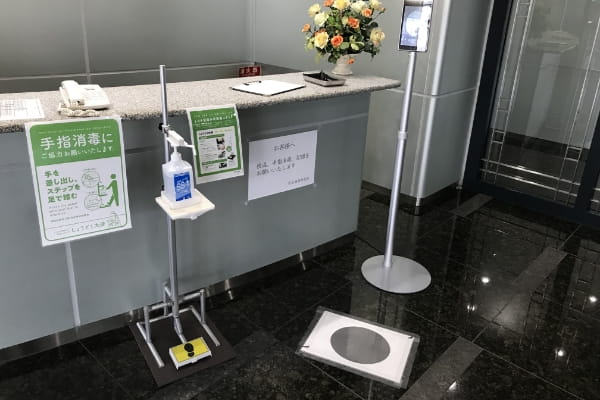
Work-life balance
In addition to adopting flextime, no-overtime days, and a compensatory holiday system, we are working to promote the systematic use of paid vacations.
We have also established a system that allows employees to work flexibly according to their circumstances, including an expanded childcare/nursing care leave system and a shortened working hour system for childcare.
